Rebirth of an American Classic: Case Repairs
By Bandit |
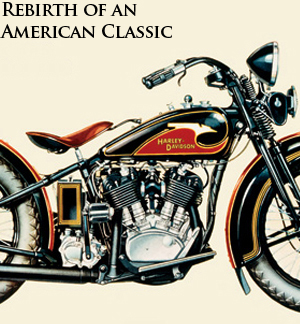
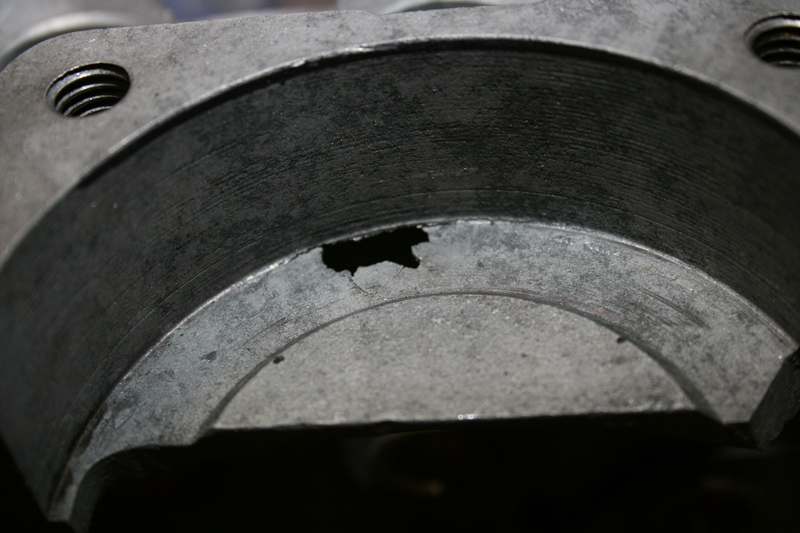




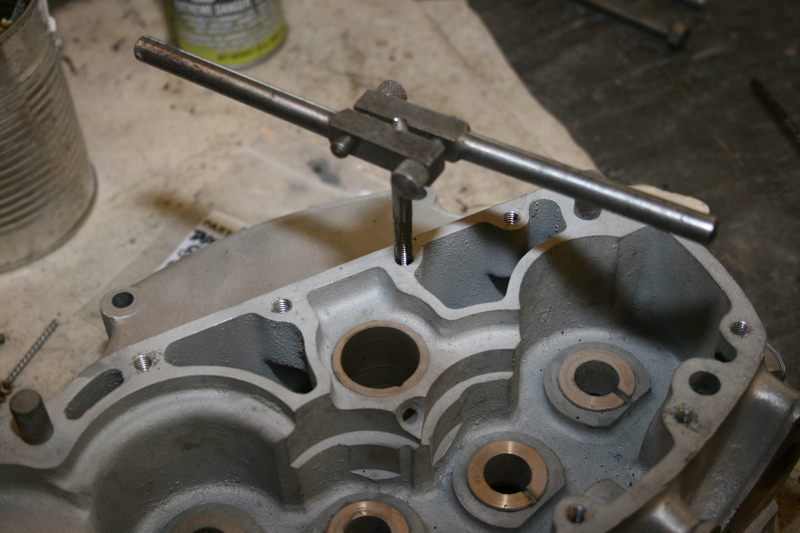

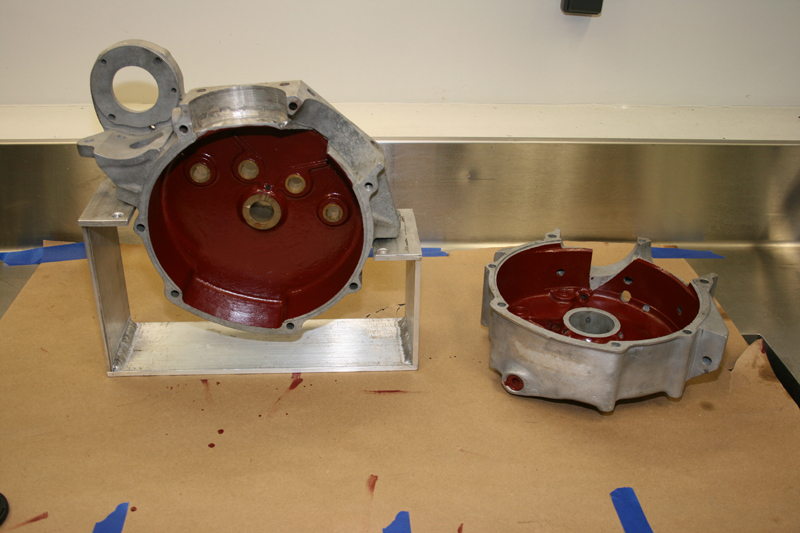
Rebirth of an American Classic: The Build Begins
By Bandit |

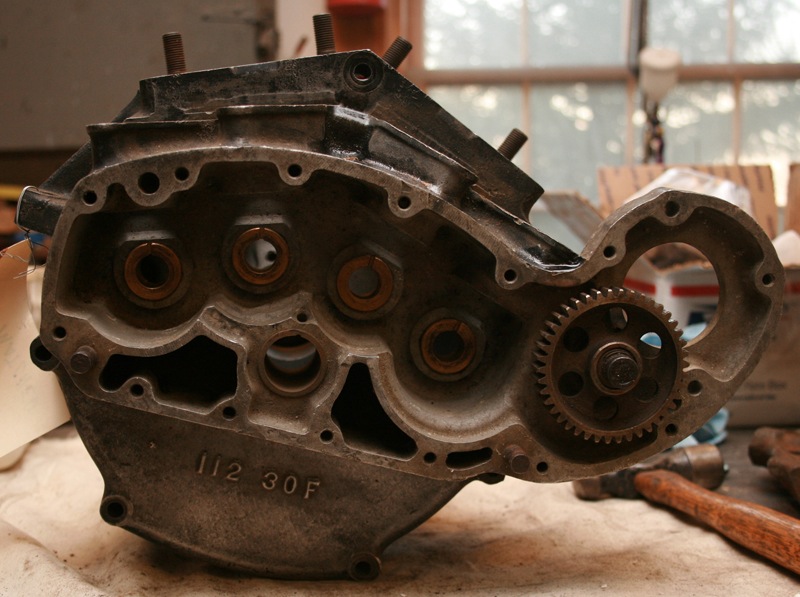
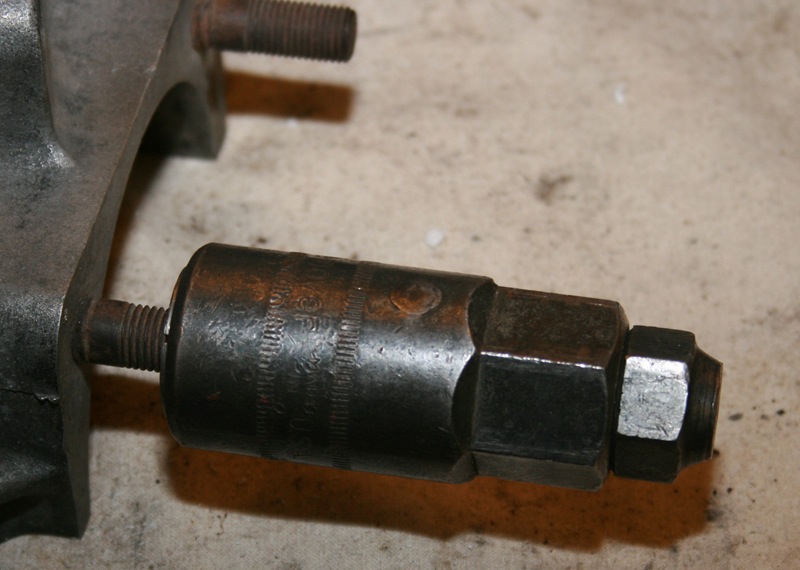
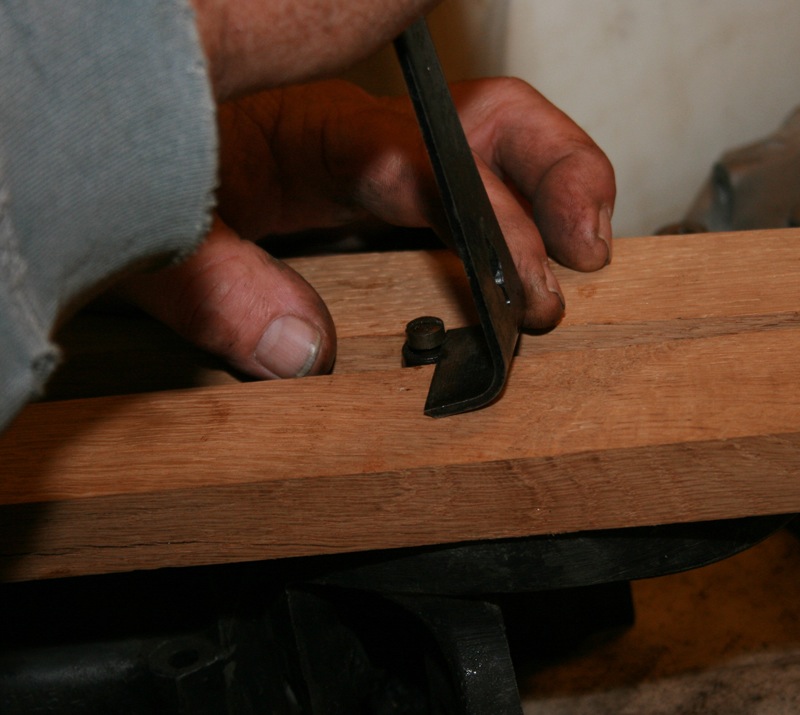
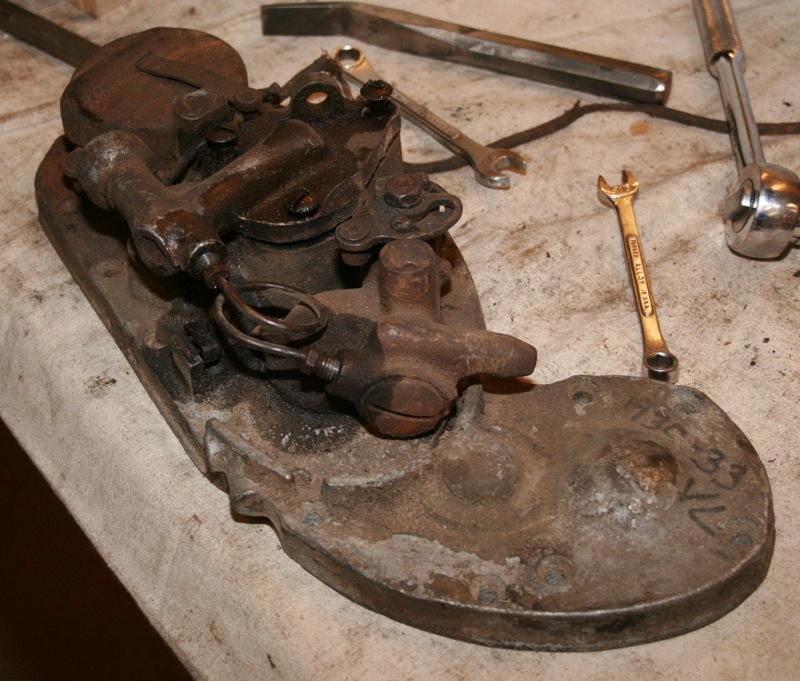
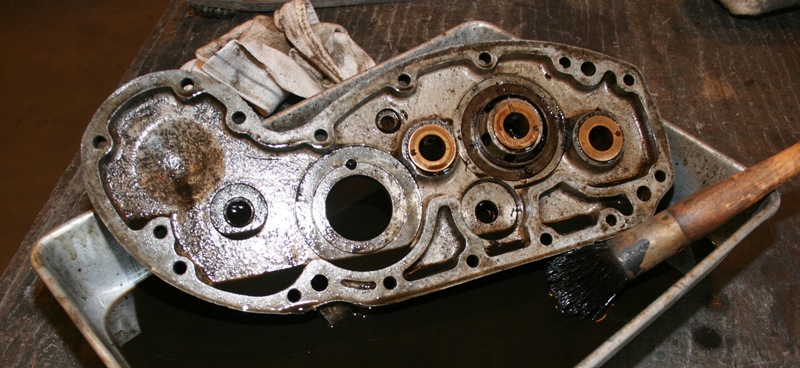
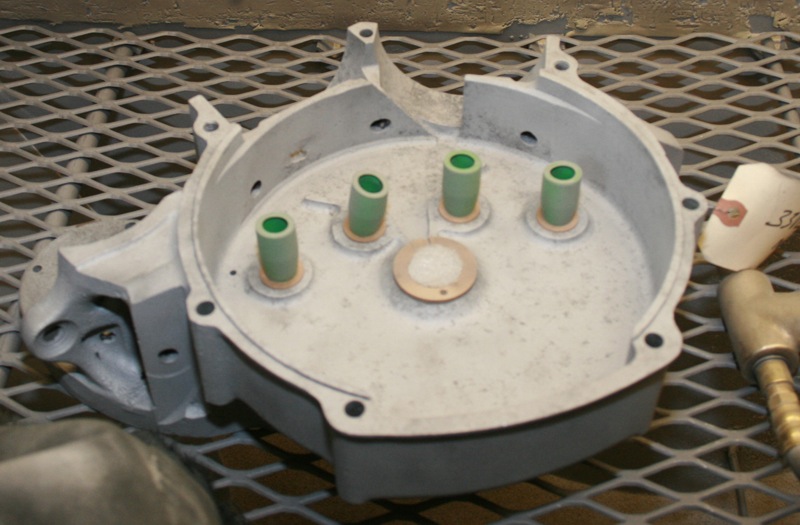
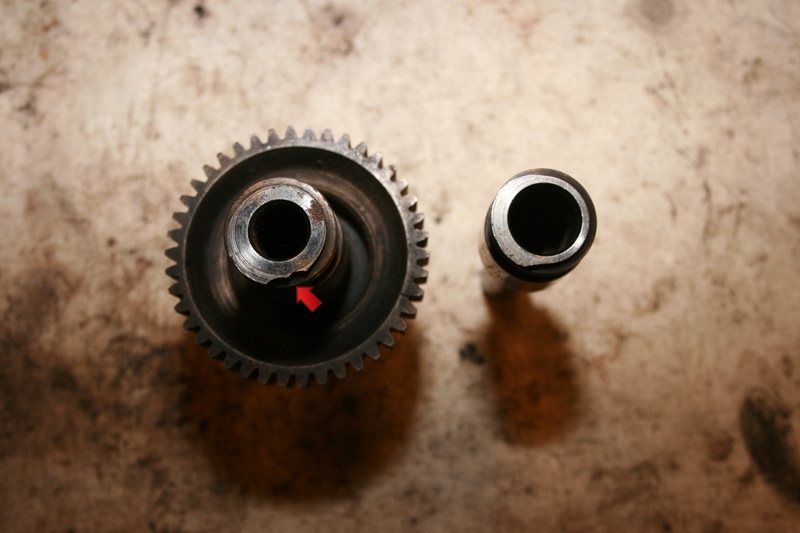
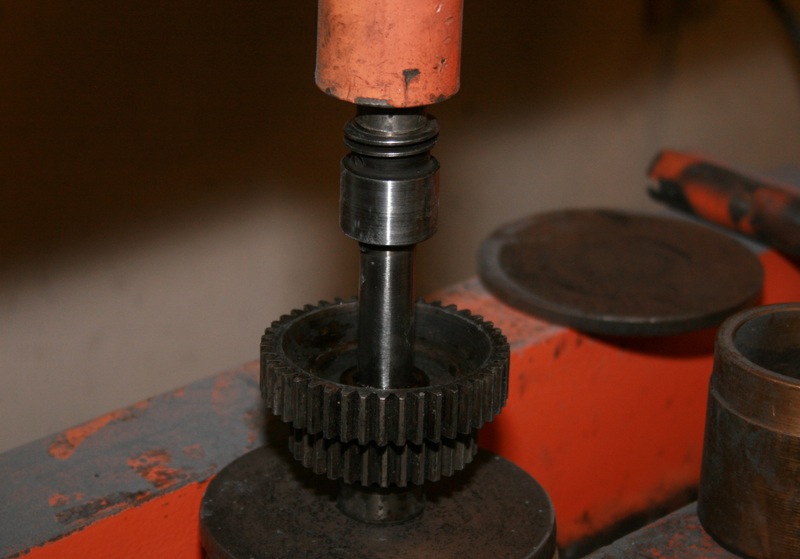
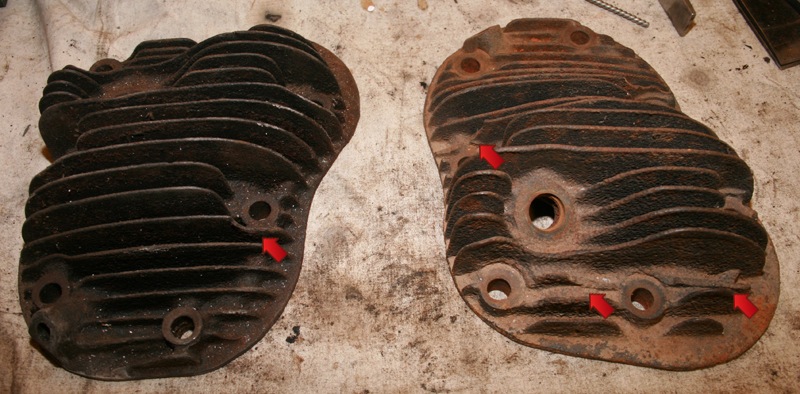
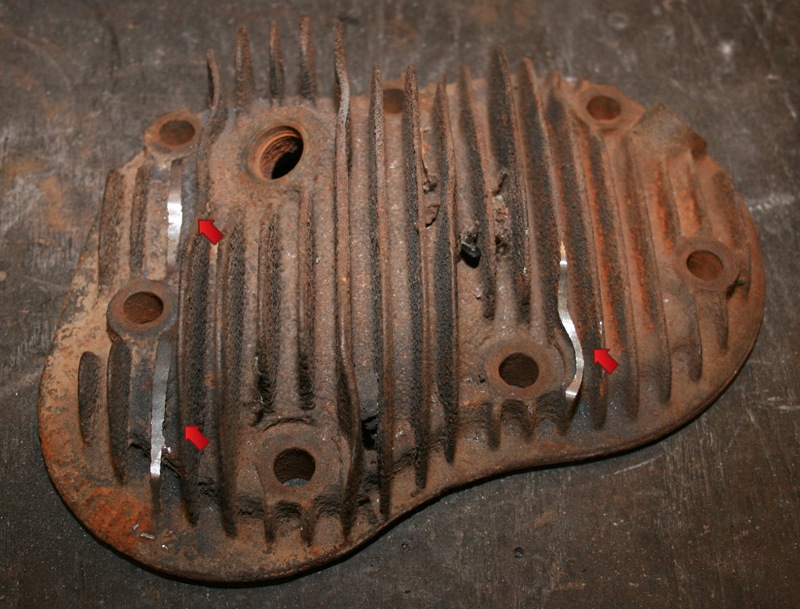
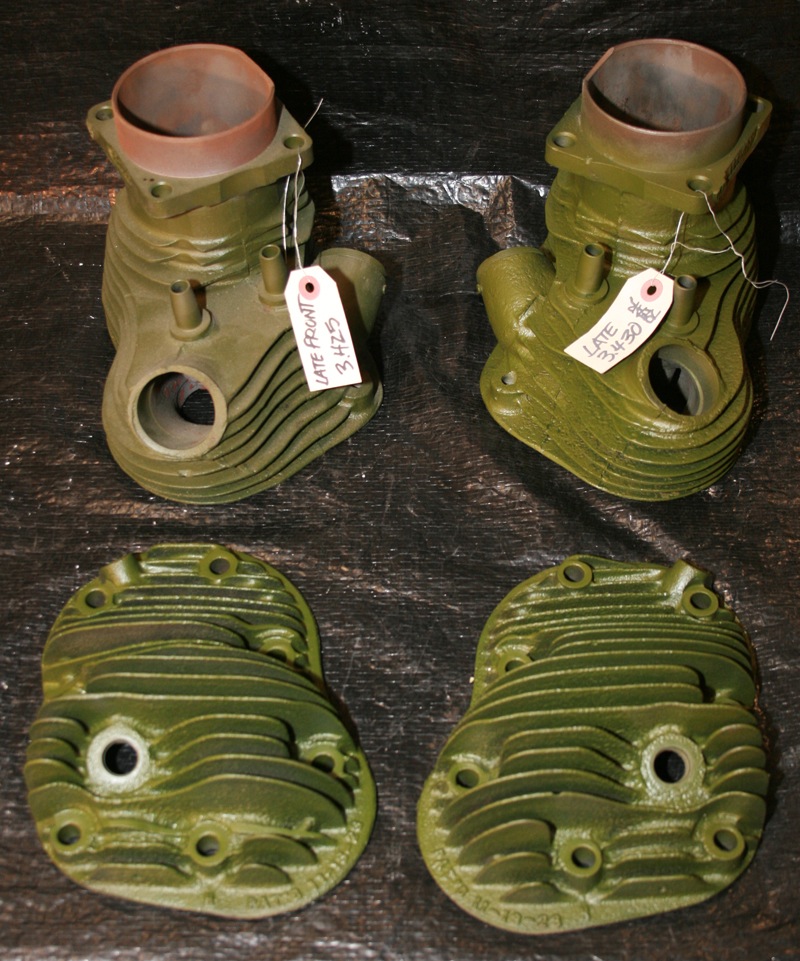
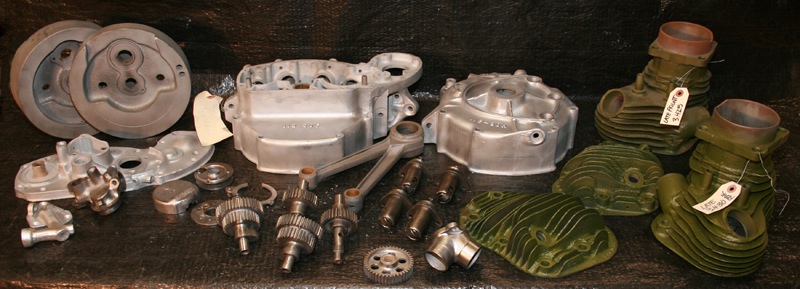
|
|
|||
|
|
|||
|
|
|||
|
|
The Mudflap Girl FXR Saga
By Bandit |

It all started when a brother was desperate for cash and I bought a basket case Dyna, and with the help of JIMS machine turned it into an FXR. I started to build it for my son, Frank, the tattoo artist, around an old Kenny Boyce-styled pro street frame. Making progress on this build, with a massive upside down Custom Chrome front end, a brother stumbled into my shop and told me about Paul Cavallo and Spitfire Motorcycles.
Paul’s been around the industry for a couple of decades. When the economy tanked, he hung on with his dad and started Spitfire motorcycles. He was struggling and a brother thought I could help by using a couple of his Spitfire components on a Bikernet.com build. I went to visit Paul and was inspired by his non-stop drive to create new components daily, build world-class old school chops for customers, and kick ass at shows all over the country.

Then I was hit with the bike builder blues. My girlfriend left and I was forced to sell my 2003 Road King, leaving me with a ratty rigid Shovelhead and a Bonneville racer to ride. I needed a new girl and a long distance rider. Too often, around the campfire we debated twin cams versus Evos and most of the bros confirmed the solid stature of the FXR configuration. A plan formulated to build myself another FXR. I returned to Paul’s shop to cut a deal on a chassis for myself. Both were stretched, almost single-loop, long-distance riders with Spitfire Girder front ends.
Paul’s team built my chassis in pure traditional FXR style and Frank’s in the pro street configuration. We re-manned Frank’s FXR engine in black and chrome, and I ordered a bone-stock crate H-D 80-inch Evo. Both transmissions were rebuilt by the JIMS crew to be 6-speed overdrive units. I went with chain final drive and Frank used a stock belt.

The overwhelming concept revolved around building a bike that’s a chopper to the bone, but could be easily ridden across the country. My stretched gas tank holds well over three gallons, the oil tank contains nearly four quarts of oil, and I installed an oil cooler for heat waves. The Spitfire bars are held in place with Custom Cycle Engineering dog bone rubber-mounted classics.

I used Contrast Cut Performance Machine grips and pegs for style, yet road comfort. The bike is rubber-mounted for vibration-free riding. I worked closely with David Zemla of Progressive suspension until we configured a shock system capable of affording me some suspension with somewhat limited travel.

The girder is an uplifting quandary. With the Spitfire structure I could feasibly install almost any shock system, with whatever spring rate I decided on. I’m still messing with the gas-operated Rockshox.

I’m missing the best part, the Saddlemen seat. This seat was carefully configured at the Saddlemen manufacturing facility in Los Angeles, from the heavy-duty fiberglass seat pan to the spine-relieving slot, to the better than foam gel, and the ultimate breathing resilient fabric. That puppy is amazing.

The engine is virtually stock with the exception of a Bennett’s Performance-installed Andrews Cam, S&S oil breather gear, and Branch flowed heads, all their state-of-the-art valves and springs, and intake manifold. I ran an Andrews EV-27 cam and Andrews chrome-moly adjustable pushrods for less flex, a new cam bearing and the Branch flowed stock heads, for 8.9:1 compression, 78 cc Branch-flowed chambers, and 75-80 horses at 2,600 rpms.

The bike was built specifically for the road, but with chopper styling. I can’t leave anything alone, or ride a stock bike. It’s against my nature, but I can ride a scooter that will get me there comfortably in style.

For the first time in my bike-building life, I built this bike in bare form, wired it, and rode it for almost eight months. The benefits are immense, since I could make changes and adjustments throughout this road or rode research period. It gave me an extended period to investigate color schemes, build the front fender, break stuff, repair, and outright replace components, including my goofy chain guard.

It’s odd, but even with 2,000 miles under her belt, I still came up with last-minute changes during the paint and powder process. I added a keyless ignition system from Digital Dawg, which proved to be a safety and security feature. The drawback to riding a bare vehicle for an extended period included rust and oil management.

Still, when I assembled the bike for the final time, I ran into rear powder-coated fender expansion, and adjustments to the position of my one-off Spitfire oil bag to prevent chain damage. Maybe a rear belt would have been a wiser decision, maybe not.


Finally, the Mudflap Girl represents the open road. She represents the drawbacks of industry when it takes our girls away from us. And lastly she represents the desire to find our Mudflap Girl at home or down the road.

Name: Keith “Bandit” Ball
Owner: Lt. Ball
Builder: Ballintsky

Year, Make & Model: 2012 Mudflap Girl FXR
Assembly/Builder: Ballorama
Timeline: 8 months

Year/Model: 2012 Girder
Builder: Paul Cavallo, Spitfire Motorcycles
Type: Girder
Triple trees: Spitfire
Extension: 9 inches over stock

Year/Model: 2011 H-D
Rebuilder: New
Displacement: 80 cubic inches
Lower End: assembled by S&S
Balancing: S&S
Pistons: H-D
Cases: factory
Heads: Branch O’Keefe
Cams: Andrews
Lifters: S&S
EFI/ Carb: Trock modified CV
Air Cleaner: Roger Goldammer
Pipes: D&D
Ignition: Crane Hi-4

Year/Modifications: 2012 JIMS overdrive 6-speed
Engine sprocket: BDL
Trans sprocket: JIMS 23-tooth
Wheel sprocket: 51-tooth
Secondary drive: Biker’s Choice chain

Year: 2012
Designer/Builder: Paul Cavallo/Spitfire Motorcycles
Rake/Stretch: 5 inches up, 2 out

Bars: Spitfire
Risers: Custom Cycle Engineering dog bones
Fenders: Bar Knuckle/Toby/Bandit front, Biker’s Choice rear
Gas Tank: Biker’s Choice
Oil Tank: Spitfire
Headlight: Old spot
Taillight: Donkey from Biker’s Choice
Speedo: Wire Plus
Pegs: Performance Machine Contrast Cut
Electrics: Wire Plus, Digital Dawg (keyless), Biker’s Choice
Seat: Custom by Saddlemen

Front Wheel: Metalsport
Front Tire: Avon
Size: 19

Rear Wheel: Metalsport
Rear Tire: Avon
Size:
Hubs: Metalsport
Rotors: Metalsport
Brakes: GMA

PAINT
Bodywork/Molding: none
Painter: Chris Morrison and George the Wild Brush
Color: Super silver
Powdercoating: Worco silver and asphalt satin black

Biker’s Choice
BDL
Custom Cycle Engineering
D&D Exhaust
JIMS
MetalSport
S&S
Saddlemen
Spitfire
Wire Plus

Biker’s Choice TWIN-POWER Ignition Tech
By Bandit |

I recently rambled about never giving up. This tech is an example in not giving up, and looking for opportunities for success. James Simonelli recently went to work for Biker’s Choice and it’s a company constantly looking for opportunities to succeed. They continue to expand and James is working hard on the Twin Power line of products.
I built this bike a few years ago and enjoyed each element of the build. It was my first opportunity to work with Black Bike Wheels and installed the new 23s at the time. I also worked with Rick Krost and the Paughco team, who were building his US Choppers frames and several components. I also worked with Chica for the first time to build my rear fender. This bike slipped together like a dream.

I was digging the old board track notion from the ‘20s, although I wasn’t the first. Arlen Ness built vintage-styled bikes with sidecars around Sportster drivetrains. The master, Don Hotop build a Silent Gray Fellow more refined than any the Davidson and Harley team built — it was beautiful. The Shadley brothers built another example with a sidecar, which I proudly featured recently.
I was just one in a long line of masterful Hamster builders to take on the challenge. When the bike was completed and I slipped the key into Phil’s Speed Shop ignition box and fired it to life, it purred like a kitten. It was a beautiful thing and I appreciated all the help and guidance slipped my way to see this project through to fruition, including the hand-tooled seat by Glen Priddle in Australia. Some of my welds were not handsome, but I was proud to see this puppy finished, and then I went for a ride.
My first challenge was the handling and the two, seemingly giant Black Bike spoked 23-inch wheels and Avon Tyres. It felt odd, but then it popped and coughed at just about 30 mph and I thought it had to be jetting. I carefully tuned and ran an S&S super E for the classic styling and shorter reach sticking out the left side of the bike.
That’s one of the distinct reasons for a Crazy Horse, now American V-Plus engine. It fit in the realm of making a bike look truly old, especially with the carb leaning out between the cylinders on the left, like old flatheads. No matter how I jetted it, it wouldn’t run past 30 mph. Ultimately, I changed the carb for a Mikuni, and I switched out the original Crazy Horse Ignition for a reliable Compu-Fire. I switched coils. I changed the exhaust by removing the muffler. Nothing changed how it ran, and I moved on to the next project.

But obviously it bugged me and recently, when James pointed out the new Twin Power ignition product from Biker’s Choice and suggested an install, I jumped at one more chance to make this beauty come to life. James suggested I install it with Primo-Rivera advance weights, although Twin Power sells a kit.

“Try it in the dual fire mode,” James suggested. “You’ll like the exhaust note and the old school thumping idle.”
Back to the initial problem, I heard strange rumors regarding Crazy Horse engines, and struggles to make them run. John White bought a bunch of the Bottlecap engines when the Indian effort failed in Morgan Hill, California. With the engines in hand, he started Crazy Horse Engines. He was a big construction guy and hoped to build something from the stylized engines, and I agreed with his philosophy. The engines were magnificent, classic, 100-inch, and different.
The company is now American V-Plus and Irma Martin, out of Auburn, Washington, owns it. She is working with Frank Aliano to reintroduce these puppies to the aftermarket and custom world.
As a rider, Frank spent over ten years racing motorcycles in all types of environments, including motorcross, cross-country, scrambles, enduro, hill climb, TT, flat track, ice, and drag racing. As a builder, Frank’s custom and high power creations continue to be trophy winners around the country, with several featured in national magazines.
As a designer, Frank spent decades in engineering, fabrication, machining and product development for Indian Motorcycles, American Quantum Cycles, Big Dog Motorcycles, A&A Performance, Double Services, and more.

Frank designed the billet system to plug more tuneable and flexible Evo ignition systems onto a Crazy Horse and now V-Plus engine. I reached out to Frank, because my investigation steered me to Micah McCloskey and then to Keith Ruxton, who designed the Worlds Fastest motorcycle engines in 1990, two Shovelheads built by Micah. They took the Easyriders streamliner to 321 mph and the record for 16 years. I was a member of the team.
Keith suggested, since I have switched out the carb and ignition, that the breather gear was out of time. “It could be flooding the engine with oil and causing it to fail,” Keith said. And so I dug in during the process of switching out the ignition system to Biker’s Choice Twin Power.

The Twin Power electronic ignition from Biker’s Choice fits ‘70 – ‘99 Big Twin models and ‘71 – ‘03. The unit is entirely self-contained and fits under the original points cover. It can be wired single- or dual-fire, and the built-in timing light allows for easy timing.
Front to rear timing is accurate to 1-2 degrees. It is delivered with a one-year manufacturer’s limited warranty, and they are made in the USA.

Twin Power coils are high-quality direct fit with at least 20% more voltage than stock.
These coils improve starting, stop high-speed misfires, and increase mileage and overall performance.
They are available in black or chrome and carry a one-year manufacturer’s warranty.

I went to work digging into the cam cover of the V-Plus 100-inch engine. I removed the point cover, hand-engraved by Heather New in Canada, with the 5-Ball Racing mascot, and then I removed the Compu-Fire ignition system, the ignition cap and the first level of cam cover. Frank coached me on removing the final billet aluminum cover.



“You may not need to back off the pushrods,” Frank said, but I ended up backing them off for a couple of reasons, including ease of replacing the cap. It can be a bastard if you don’t.

“This plate has a gasket and is held in place with steel dowel pins,” Frank said and he was right. “Take a claw hammer and install a quarter/20 bolt with a couple of washers into the plate. Use the threaded hole closest to the cam. With the claw hammer, leverage against the cam and hook the bolt.”

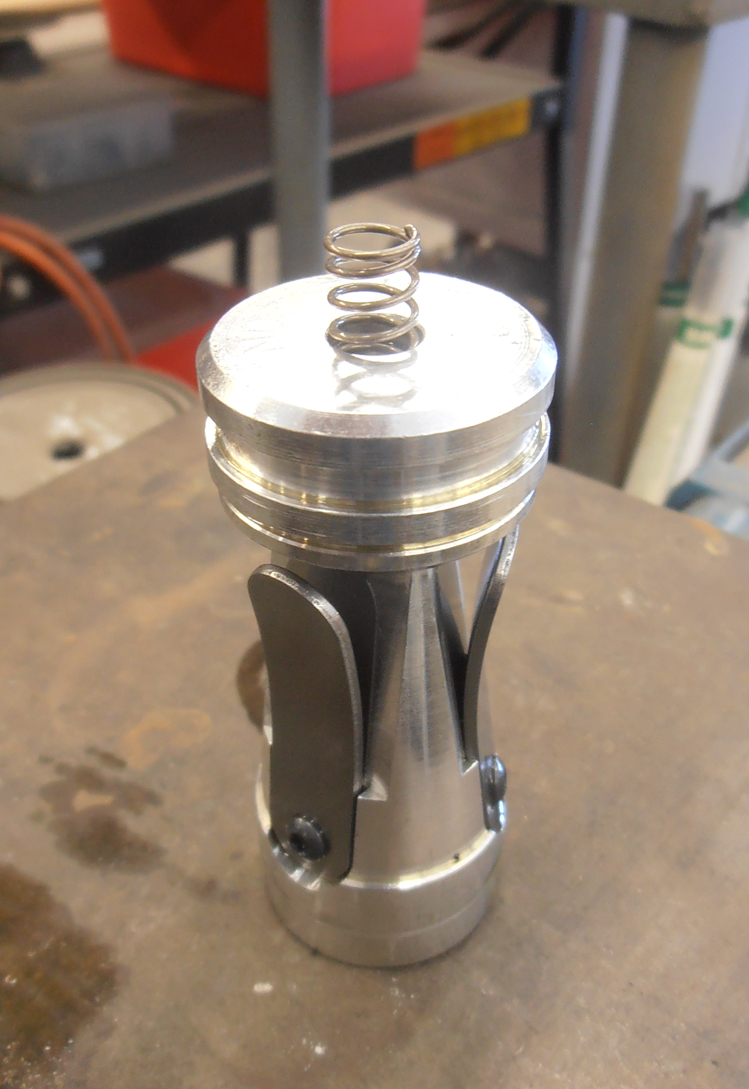

I readjusted the valves and looked for top dead center on the front cylinder with a massive tie-wrap. The tie-wrap cannot damage the sparkplug threads or any internal parts. Dominick, another master builder here in LA, suggested the tie-wrap.

“Once you have it at TDC, back it down 7/16-inch for about 30 degrees before top dead center, and your timing mark should show in the timing hole,” Dominick said. He was dead right. Worked like a champ. I grabbed a silver felt pen and was able to make marks to indicate TDC and 7/16-inch down. The timing mark popped right into the hole and I centered it by jacking up the bike and using the massive Black Bike wheel to move the engine in 4th gear.



Here are the Twin Power T/R #21-6500 ignition guidelines. They wanted me to rotate the motor until the front cylinder showed the fully advanced mark in the center of the timing hole, during the front cylinder compression stroke. Note: The compression stroke is evident when the both front valves are closed and you can rotate the pushrods with your fingers.
I installed the new ignition, keeping the rotor index hole in line with the light on the ignition, basically at 9:00. This system automatically runs in the single- or dual-fire mode, depending on how you wire the coil or coils. If it’s not in the 9:00 position, you’re on the wrong compression stroke. Rotate the engine again.

James recommended the dual-fire mode so I wired the Twin Power mini coil with the red wire heading to one lead and the black and white wires going to the other lead (it doesn’t matter which lead you chose on these coils). For single-fire coils, you need to run your hot wire and the red wire from the ignition system to the positive side of the coil, the white wire to one coil and finally, the black wire to the other coil.

This mini coil will afford more cooling space around it while it’s stashed between the heads. This coil doesn’t indicate a positive or negative lead position.

I ran the gray tube insulated wires out of the bottom of the cone cover and basically around the engine and up to the coil between the heads where many coils are located. I wish the insulation was black, and in hindsight I would have run shrink tubing over the gray sleeve for additional protection. I ended up extending the wires about a foot.
I also soldered a length of 14- or 16-gauge wire to pull the new wires through my existing loom. It worked like a champ to hide the new wires. I extended the wires, soldered them in place, using the Frank Kaisler soldering tool and his system for connecting wires, which can be a pain in the ass. He basically cuts and strips his wires and feeds one into the other for a direct connection, which also does not cause a lump in the wiring. It’s almost like shoving a key into a lock and it sometimes takes some maneuvering. That’s where his handy-dandy tool comes in.

Don’t forget to install the hot wire from your ignition switch to the hot side of the coil. You will need that power. I installed a new Twin Power Lithium Ion Battery while I was at it. What an amazing puppy.

This battery fit like it was meant to be. Most of these Twin Power Lithium Ion batteries were designed for stock applications, but we found just the right one for my situation.
Note: Use this ignition system with 3 to 5-Ohm coils.


After the coil was wired and actually before I completely installed the Twin Power ignition system, I installed the magnificent Rivera/Primo mechanical advance weights. I lubed the weight axles with some engine oil and slipped them into place over the cam and then slipped the billet aluminum rotor in place with timing magnets embedded into the cylinder. Be careful, the rotor only fits over the stem in one way. Note the position of the flat.


I repositioned the ignition plate and turned on the ignition switch. The red LED light lit up, and with a right angle punch I was able to push the rotor into the advanced position. It only moved about 20 degrees, if that. The light came on, indicating power to the coil and the ignition system. The key is to rotate the rotor counter-clockwise to the fully advanced position and have the light go out. As soon as you release the rotor, the light should come back on.
I always shoot for the exact link. I want it to light up at the exact point that the rotor moves. The coil and the spark plug fires the moment the LED light shuts off.
The timing procedure is exactly the same for both single- and dual-fire operations. The front and rear cylinders are internally timed and accurate to 1 degree.

That’s when life got interesting. The Redhead loaded up my 5-gallon gas can with premium and I poured a couple of cups in the tank and turned on the petcock. Nothing. I monkeyed with the carb. Nothing. Sometimes there can be a vacuum. I almost filled the tanks; still, nothing passed through the clear glass filter. I started at the carb and removed the line. Still nothing. I removed the line to the brass, inline petcock. No joy.
I could even looked down the mouth of the petcock and saw the large ball valve. I could see it turn and open. Nothing. If it had worked, my face would have been covered in gas. Then I attempted to remove the petcock.

I moved a large crescent wrench into position to back up turning the brass petcock and was immediately sprayed with gas. It was one of those strange moments in the life of a mechanic. Sure, it was a pain in the ass, but it always seems that stuff shows up at just the right time. The trick was to get all the fuel out of the tank so I could replace the split line, plus the petcock was clogged.

With the Redhead wearing protective purple gloves, we maneuvered large old fuel lines, funnels and the gas can to carefully remove all the fuel. I replace the split line (I have never, ever seen a line split like that). We removed the petcock and discovered what appeared to be a glazed layer above the ball valve. The redhead cleared it out with a short piece of brass rod and the fuel delivery system was replaced and fuel added. The 5-Ball factory racer fired right to life.
I spoke to Keith Ruxton the day before, and he told me that top end breathing engines, especially high performance engines don’t need breather valves, or even reed valves. I started looking at fuel delivery from the gas tank, which makes a lot of sense. I need to check to see that my fuel line will deliver 16 ounces of fuel in one minute, according to Dr. Ruxton. I removed the fuel line from the carb, stuck it in a measuring cup, checked my watch and turned on the petcock. It filled it to the 16-ounce mark in about 20 seconds. It wasn’t fuel delivery. So, I’m still not sure if my sputtering problem is solved.

I noticed one more item that needed to be addressed. When tightening the advance bolt, the rotator rubbed against the ignition plate, which would mess with the advance weight mechanism. First I took out the plate, because this cone was removable and if the Allens were loose it shifted around. I loosened them, shifted the system and retightened them. It was substantially better, but not perfect. This wouldn’t happen with a stock cone motor.
“The weights and the rotor have to be completely free to be able to advance,” said Ben Kudon, the Executive Director of Rivera-Primo

I reached out to James. “Here’s what you can do to Auto Advance units. Put a drop of blue Loctite on the advancer bolt and do not over-tighten. Spin the motor without the ignition in place and watch the rotation. If it is eccentric, take a small punch and give a tap on the flat of the hex head screw that will shift it to best center it, until it runs true. Please let me know, nothing should need to be modified. Occasionally, a shim is needed between the advance unit and the cam to shift the mechanism outward.”

“I am not familiar with the Indian cam cover, might be a little different from H-D. Does the plate fit nicely and rotate easily in the recess or is it tight? If this is tight, you may have to slightly sand or file the plate O.D.” That’s what I did until the rotor was centered. I also noticed the hex rubbing on the gasket. Again, this wouldn’t happen in stock applications. I cut a hole in the gasket and rotated the gasket to allow the 5-Ball Racing cap to set out slightly more. Done deal. James also suggest thin washers under the stand-outs, which would accomplish the same thing.

I took the bike for a ride. Over and over it fired right to life and hummed, but again is sputtered. I called Phil at Phil’s Speed shop late at night. He was still working. “It could be the cam timing,” said Phil. “They may have switched the gear for a better pinion shaft mesh and since there is no direct key-way to align the cam, it could have shifted.”
I’ll pull the cam today and take it to Bennitt’s Performance or Branch Flowmetrics to have it checked. Never give up!

Biker’s Choice
Paughco
Rivera/Primo
Black Bike Wheels
Chica
US Choppers
Rick@USChoppers.com
Phil’s Speed Shop
941 West Collins, Orange CA 92867
Appointment (714) 771-6727
Avon Tyres
New Line Engraving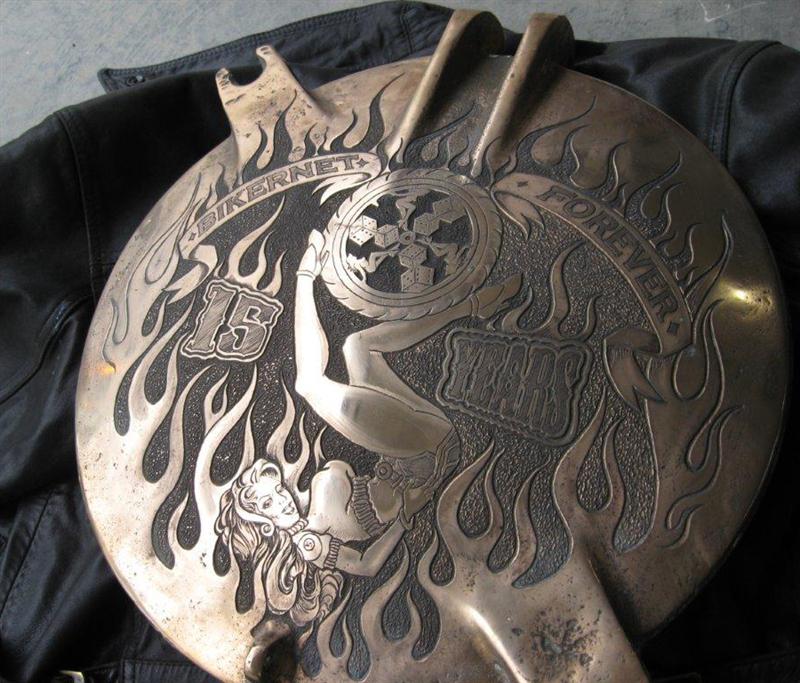
Sturgis Shovel Gets A Wrap
By Robin Technologies |




VHT FLAMEPROOF COATING
VHT FlameProof Coating will renew and extend the life of any surface exposed to extremely high temperatures. This unique coating is a matte finish, silicone ceramic base widely used by the automotive industry on exhaust systems and the aerospace industry for jet engines, re-entry vehicles and other high temperature applications. VHT FlameProof Coating will withstand temperatures up to 2000°F (1093°C) and is ideal for use on headers, exhaust systems, or wherever an extreme temperature coating is needed.
Applications: Headers, Exhaust Manifolds, Piston Domes, Inside Heads

VHT FLAMEPROOF COATING does require curing and VHT includes some specific instructions on how to do this.
Curing FlameProof
VHT FlameProof Coating only attains its unique properties after correct curing (refer to instructions on the can).
Paint must be completely dry before curing
Heat to 250°F (121°C) for 30 minutes
Cool for 30 minutes
Heat to 400°F (204°C) for 30 minutes
Cool for 30 minutes
Caution: Do not exceed the temperature of the least heat tolerant component or the base metal
Paint must be completely dry before curing
Run at idle for 10 minutes
Cool for 20 minutes
Run at idle for 20 minutes
Cool for 20 minutes

Once I finished painting and curing(?) the exhaust pipe, it was time to get wrapping. J&P Cycles has a large selection of exhaust wrap to choose from in their online catalog and after looking at all the different options I decided to order the Design Engineering Inc, Titanium Exhaust Wrap Part #308-159. I also had them throw in a package of DEI’s 8-inch Stainless Steel tie wraps to secure the ends.

•Promotes increased flow for improved performance
•Reduces temperature & vibration breakdown
•Extremely pliable for a tight and secure wrap
•DEI HT Silicone Coating not required
•Pre-wetting roll not necessary for wrapping
•Hi-tech carbon fiber look
As usual my order from J&P Cycles showed up almost as fast as I hit the enter key on the order form. Once the wrap arrived I looked over DEI’s directions and proceeded to start wrapping the pipe.








Atomic Bob Original Art for Sale at Atomic Bob Shop
By Bandit |

I got on the horn with Atomic Bob to ask him to donate some art for the upcoming Flying Piston Benefit online auction in Daytona on March 4, 2024.
Instead of answering the question, Bob growled about those thieving sonsabitches hacking his Instagram account and were digitally squatting on his property.
He can’t DM, he can’t post directly, and he can’t get it back through Instagram. And the thieves want 250 hostage money!
I said, “250K?”
No, $250 and I won’t pay it. If I find them, they won’t do it again! After he got that off his chest, we discussed his new store. He’s now offering his original masterpieces at the Atomic Bob Shop on Facebook. And here’s a kicker—he’s drawing inspiration from the vibrant 2000s era!
2000s? During this time, Atomic Bob lived his best life with zero worries. Picture this: motorcycles, cars, cash—anything he fancied, he had it.
With a grin, the Atomic One shared, “Those were the days!”
.jpg)
Apparently, he use to embrace a perpetual cloud of smoke because, hey, who cared? “I was in my 20s, living the dream. But then I thought I should be a responsible adult and stick to legal stuff—like being an alcoholic,” he chuckled…
Ah, the Atomic Bob wisdom!
Atomic has since put the whiskey down and picked up the pipe. Since Ohio is now a cannabis state, he likes to kick back, relax and paint high.

If you haven’t seen Atomic Bob’s artistic style, then you are in for a treat. He seamlessly blends pinstriping, custom paint and illustration with a distinctive touch. Renowned for his imaginative creations, Atomic Bob’s art frequently features themes revolving around monsters and eyeballs, adding a unique and captivating flair to his work.
Bob then took me through a couple of his works in his Atomic Bob Store.
The first piece of art originated in 2014, was completed in Atomic Bob’s grandma and grandpa’s basement. His girlfriend Kelly had kicked him out for the last time and got him locked up as well.
.jpg)
“I was feeling down as I paged through a magazine and saw this T-Bird,” explained Atomic. “I had this building down by the railroad tracks. I decided I was going to call it Atomic Dice Custom Paint. This T-Bird was going to be my new logo. I remember I was mad because I had to start my life over yet again, get sober and blah, blah, blah.”
The T-Bird was drawn in-between fights and arguments and all kinds of chaos, including yelling and smoking cigarettes late into the night.
“The lucky boy or girl out there who gets this can honestly light it on fire and dance naked in the dark,” said Bob.

Another interesting piece is an original autobiographical art piece of Atomic Bob’s ‘51 DeSoto. His lead sled was slammed with exhaust coming out of the rear quarter panel.
This framed piece fell on his head when the cops came to arrest him, while slamming him against the wall. He reframed it, of course, but you can still see little slices in the parchment where the cops stepped on the art.

“When you’re an alcoholic for so long as I was, there’s a lot of moments I missed. I actually stare at things in order for shit to start to come back to me,” explained Atomic.
And that’s where the story gets cool. So, when somebody buys this, it will be like, “Oh man, the artists got arrested, the damn thing fell on him, and it was stomped by a cop. What’s not to like?”

“So, I’m living in the 2000s with my music. Feeling the good vibes. Smoking pot and taking care of myself,” Bob said. “I am grateful for what I have. I’m not abusing my body.”
“The medical industry might be able to fix me, but I can tell you right now, I’m not going to make it worse because I ultimately have to make money with my hands and my arms and everything.”

BIG FRIG – https://bigfrig.com/
FLYING PISTON BENEFIT – https://flyingpistonbenefit.com/
ATOMIC BOB SHOP – https://www.facebook.com/groups/1324617964909190
The cousin for Harley-Davidson X440
By Wayfarer |

Even as X440 takes on the local behemoth Royal Enfield, the global two-wheeled giant Hero MotoCorp’s Mavrick 440 was unveiled in India at Hero World 2024.
Based on the Harley-Davidson X440, it features a power-roadster design philosophy and will be available for bookings in February 2024.
The Mavrick was co-developed in association with Harley-Davidson and is based on the X440. Available in five colour options, across variants, dealerships will accept bookings from February 2024 with deliveries beginning April 2024.
Harley-Davidson X440 and Mavrick 440 share the same engine and trellis frame. Yet it looks drastically different and may not appeal to those who loved the X440 design derived from Harley-Davidson XR1200.
Mavrick 440 will likely compete well against those left behind by the X440, including the big four Japanese brands. In all of this, the other retro-cruisers such as recently announced Honda CB350 and Jawa Forty-two and the Roadsters from Yezdi and TVS seem lost in the noise, with less brand appeal and even less after-sales expectations.


Find out the detailed specs, features and updates at
https://www.heromotocorp.com/en-in/motorcycles/Mavrick.html
With the launch of Mavrick 440, the buyers of Harley-Davidson X440 might also breathe a sigh of relief as the doubt for after-sales-service and parts might get resolved. Hopefully, H-D’s franchising strategy with Hero and Chinese QJ Motors (for China market) is a long-term strategy. I doubt if Harley-Davidson will again disappear overnight —since Hero has engaged so much resources, it is likely a tight, well-planned partnership.
* * * *


Annual Mecum Auction at Las Vegas 2024
By Wayfarer |

33rd Annual Vintage and Antique Motorcycle Auction by Mecum Auction at Las Vegas
January 24-27, 2024
ADDRESS
South Point Hotel & Casino
9777 Las Vegas Blvd S
Las Vegas, NV 89183
VIEW LOTS: https://www.mecum.com/auctions/las-vegas-motorcycles-2024/lots/
FOOD & BEVERAGE
The South Point Hotel & Casino offers a variety of favorites and local cuisine. Food and beverage stands are located throughout the facility.
Payment Options
Cash and credit or debit cards are accepted.
RV/CAMPINGRV/CAMPING
Camping on-site at the South Point Casino is not allowed. Campgrounds are available in the area and individuals are encouraged to check local listings for more information.
MOTORCYCLE SHIPPING
Whether you’re consigning your motorcycle or purchasing a new one, HaulBikes Motorcycle Transportation will deliver your bike safely to its new home! Contact HaulBikes at 888-HAULBIKES today. View rate information.

ROAD ART SHIPPING
Navis Pack & Ship
6185 S Valley View Blvd, Suite L
Las Vegas, NV 89118
lasvegas@gonavis.com or (702)494-9616
*All Road Art must be retrieved by 12:00 PM on Sunday, January 28. Any remaining items will be shipped via our preferred shipping company at the winning bidders expense.
ACCESSIBILITY
Scooter & Wheelchair Rental Information
Personal wheelchairs and mobility scooters are allowed. No on-site rental options are available.
Golf Carts
Personal golf carts are prohibited.
PETS
For the safety and comfort of both pets and people, the admittance of any and all animals is prohibited at every Mecum event, unless the pet is a service animal under the federal guidelines of the Americans with Disabilities Act or similar state or local laws.
LOST & FOUND
To report a lost item, please contact us at (262) 275-5050 or email info@mecum.com.
TV Schedule: Friday, Jan. 26 from noon to 5 p.m. (Live on MotorTrend+) and Saturday, Jan. 27 from noon to 5 p.m. (Live on MotorTrend+) (All times Pacific)
* * * *
Tell ’em Bikernet.com sent ya !
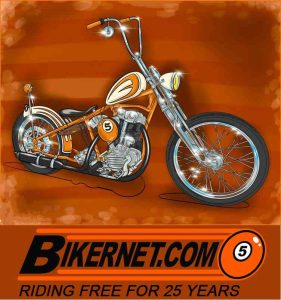
Colorado Motorcycle Expo 2024
By Wayfarer |

COLORADO MOTORCYCLE EXPO 2024
JANUARY 27, 2024 – 9:00am – 7:00pm
JANUARY 28, 2024 – 9:00am – 4:00pm
AT THE NATIONAL WESTERN COMPLEX IN DENVER
GET TICKETS https://www.coloradomotorcycleexpo.com/
Saturday Ticket = $25
Sunday Ticket = $20
Due to parking restrictions, we are unable to offer VIP tickets this year.
$2 discount for Military and 65+ (with proper ID at the door only)
Children 12 and under are free
A MOTORCYCLE EVENT YOU DON’T WANT TO MISS…
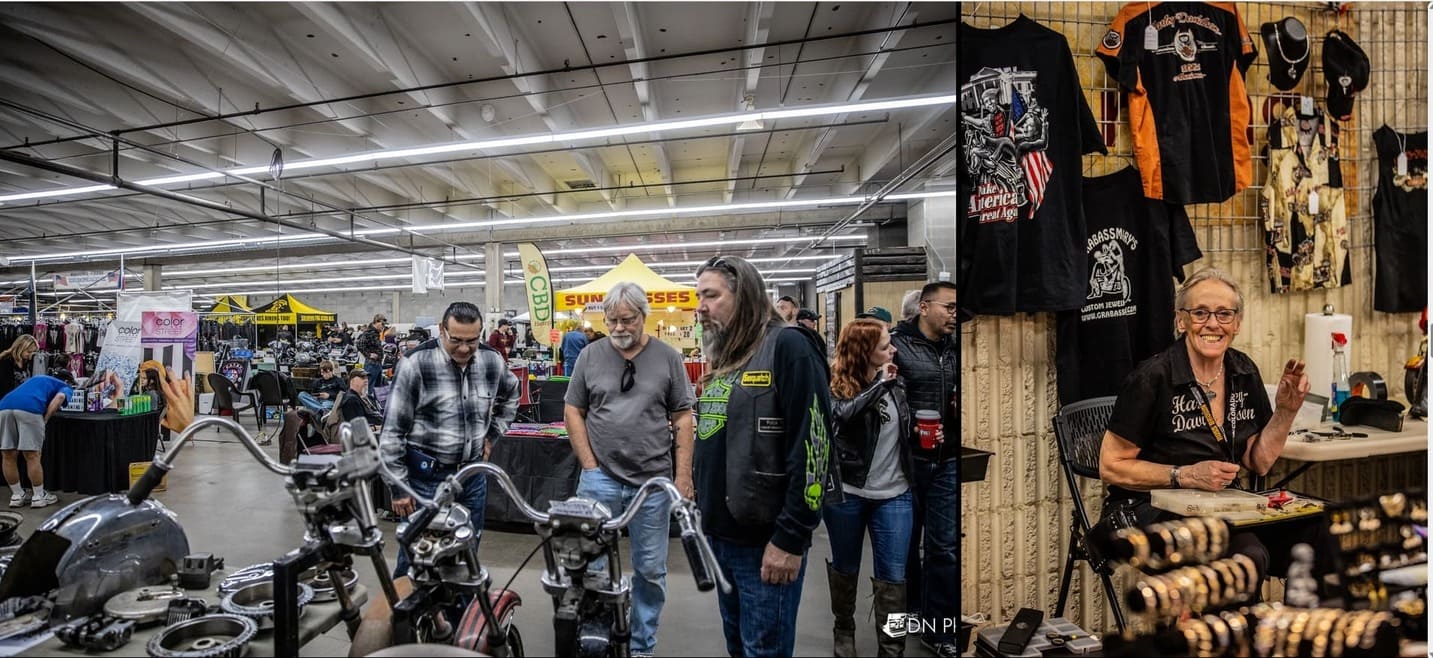
LARGEST INDOOR MOTORCYCLE SWAP MEET IN AMERICA!
The expansive venue, spanning 300,000 square feet, accommodates up to 800 vendor booths and swap meet tables. We welcome vendors of diverse varieties, ensuring you’ll find exactly what you’re looking for.
LARGEST MOTORCYCLE SHOW IN THE ROCKY MOUNTAIN REGION
Showcasing approximately 100 bikes vying for top honors in up to 20 categories, the Colorado Motorcycle Expo stands as the largest and premier motorcycle show in the Rocky Mountain region.
USED MOTORCYCLES FOR SALE IN THE CORRAL
Explore our selection of available used bikes for sale, or bring your own to sell. Join us for an incredible opportunity to present your bike to a vibrant audience of thousands!
LIVE MUSIC, ENTERTAINMENT, AND SO MUCH MORE
Experience the energy of live bands, captivating solo acts, engaging adult activities, a dedicated kid’s zone, and much more. There’s something for everyone!
* * * *
Tell ’em Bikernet.com sent ya !

Is Green the New Gray Area
By Bandit |








First and foremost, electric vehicles are expensive. Some studies suggest that people who can afford to buy all-electric cars represent a finite group, and that many of those consumers have already purchased an EV car or truck, meaning the available pool of buyers is shrinking. Also problematic is that due in large part to the high cost of battery replacement, there is a very small market for used electric vehicles. Basically, no one wants to buy them knowing that a big repair bill is headed their way. While battery technology will likely improve in coming years, as of today that technology and questions about the cost of building a sufficient charging infrastructure are major concerns for consumers.



Executive Director –
https://mrf.org/join























